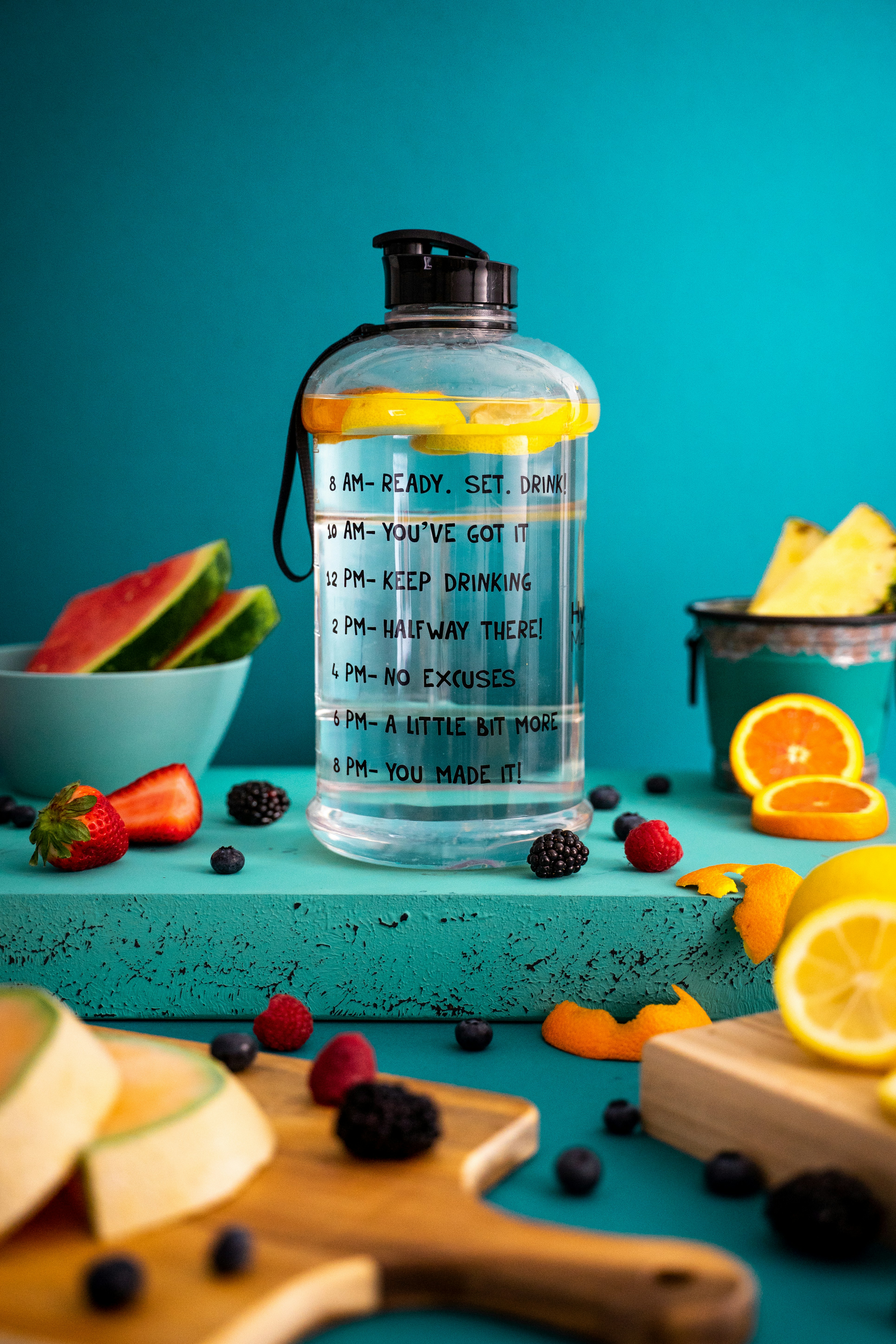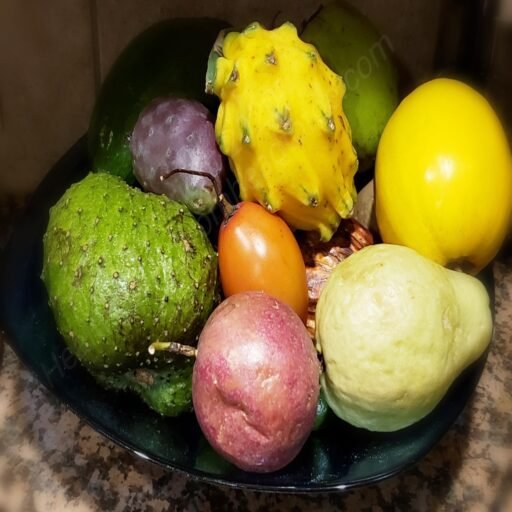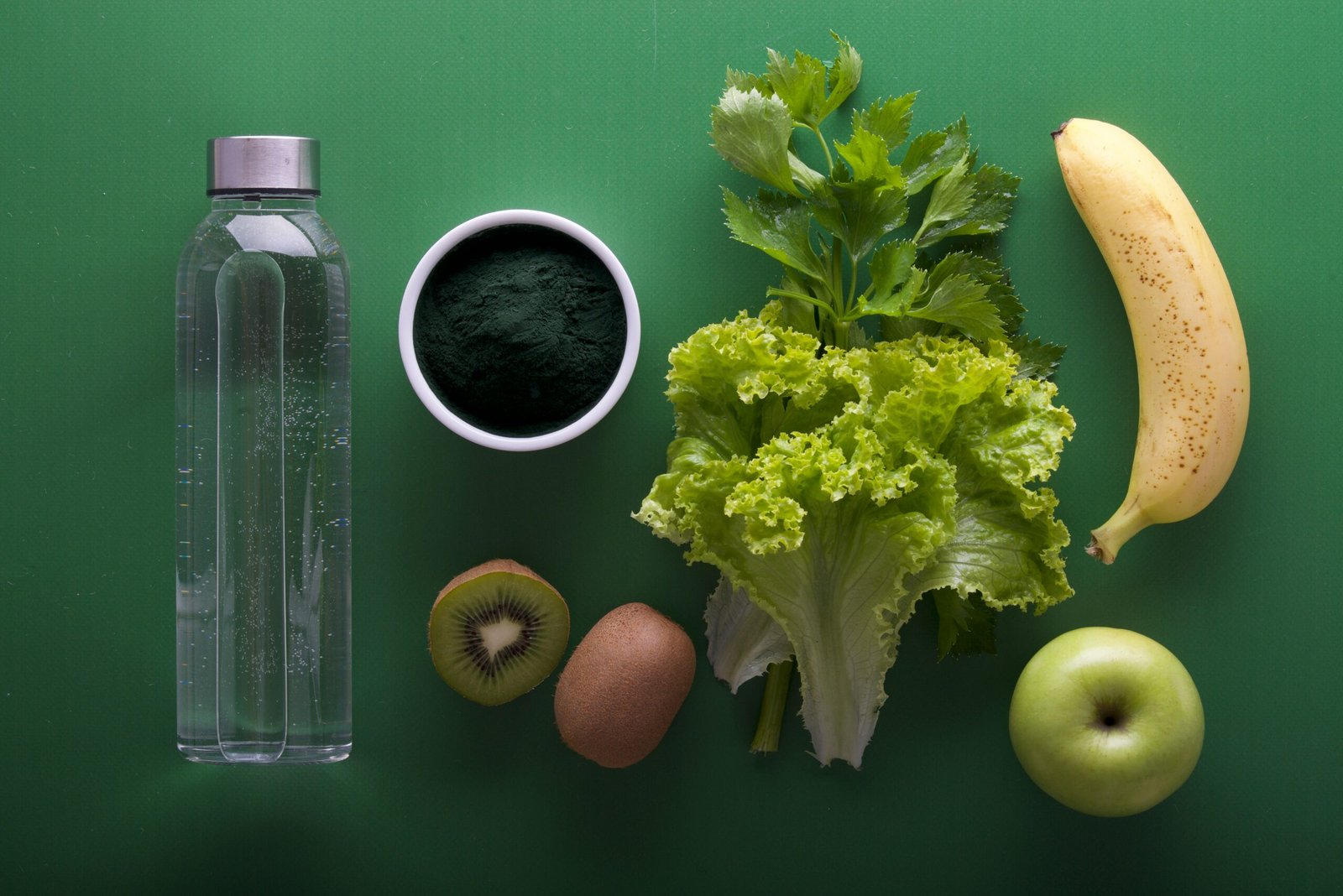Best Ways to Hydrate Your Body and Keep It Hydrated
Introduction to Hydration
Hydration is a fundamental aspect of maintaining overall health and well-being. Water constitutes a significant portion of the human body, and its presence is essential for various bodily functions. Among its many roles, water aids in digestion, helps regulate body temperature, and facilitates the transport of nutrients throughout the body. Ensuring adequate hydration is crucial for delivering oxygen to cells and flush out waste products, thereby supporting overall bodily functions.
Understanding the importance of hydration is key, especially considering that even mild dehydration can have a substantial impact on both physical and mental performance. Signs of dehydration may include thirst, dry mouth, fatigue, and dizziness, which can adversely affect concentration and cognitive abilities. Individuals who engage in regular physical activities or live in hot climates may require increased water intake to replenish lost fluids.
The human body loses water throughout the day through processes such as sweating, respiration, and urination. Therefore, it is vital to continuously replenish these lost fluids to maintain optimal hydration levels. When the body lacks sufficient water, it can lead to various health issues, ranging from headaches and muscle cramps to more severe conditions such as heat stroke and kidney stones.

In light of the crucial roles water plays in sustaining health, developing a habit of drinking adequate fluids throughout the day is essential. Incorporating water-rich foods into one’s diet, such as fruits and vegetables, can also contribute significantly to hydration. As awareness of hydration’s importance grows, understanding how to keep the body hydrated becomes increasingly vital for overall health and effective bodily function.
Understanding Your Hydration Needs
The importance of hydration cannot be overstated, as it plays a crucial role in maintaining overall health and bodily functions. Every individual has unique hydration needs influenced by several factors, including age, gender, climate, physical activity level, and overall health. Understanding these factors can help guide individuals in maintaining optimal hydration levels.
Age is a significant determinant of hydration requirements. Infants, for instance, have higher water intake needs relative to their body weight compared to adults. As people age, their body’s water content decreases, and the sensation of thirst can diminish. Consequently, older adults may need to be more proactive in ensuring proper hydration. Gender also plays a part in hydration needs, with men typically requiring more water than women due to differences in body composition and muscle mass.
Climate is another vital factor affecting hydration. Hot and humid conditions increase perspiration and fluid loss, necessitating higher water intake to replenish lost fluids. Similarly, during cold weather, individuals may experience increased respiratory water loss, particularly in dry air environments. Physical activity level significantly impacts hydration needs as well. Those who engage in regular exercise should be mindful of their fluid intake, as increased sweating during workouts requires additional hydration to maintain performance and recovery.
Moreover, overall health and dietary factors should be considered when assessing hydration needs. Individuals suffering from illnesses, fever, or gastrointestinal issues often require greater fluid intake to combat dehydration. Additionally, consuming diuretic substances such as caffeine and alcohol can lead to increased fluid loss, suggesting the need for extra water intake. Generally, a common recommendation is to aim for at least eight 8-ounce glasses of water, known as the “8×8 rule,” but this may vary significantly based on the aforementioned factors.
Best Sources of Hydration
Maintaining hydration is essential for overall health, and while water is crucial, several other sources can effectively contribute to your hydration levels. One of the most significant contributors is the consumption of fruits and vegetables, which are not only nutritious but also contain high water content. For instance, cucumbers, lettuce, and radishes are composed of approximately 95% water, making them excellent choices for hydration. Fruits such as watermelon, strawberries, and oranges can also provide a substantial amount of water, with watermelon containing about 92% water. Incorporating these high-water foods into your diet can greatly enhance your fluid intake and keep your body hydrated.
In addition to whole foods, various beverages can help replenish fluids. Herbal teas, for example, are a flavorful and hydrating option. Unlike caffeinated drinks, which may have a diuretic effect, herbal teas are soothing and can be consumed hot or cold, thereby assisting in hydration. Furthermore, electrolyte drinks, designed to replace fluids lost during exercise or heat exposure, can be beneficial. These drinks typically contain essential salts and minerals, such as sodium and potassium, which help maintain hydration and support fluid balance in the body.
While it is vital to drink adequate water, it is equally important to diversify your hydration sources for a more enjoyable and effective approach. Smoothies made with high-water fruits and vegetables, homemade electrolyte drinks, and even soups can provide essential hydration. Being mindful of what you consume not only enhances your hydration but also supports overall wellness. By incorporating a variety of high-water foods and hydrating beverages into your daily routine, you can ensure that your body stays well-hydrated and functions optimally.
Hydration Strategies for Active Lifestyles
Maintaining optimal hydration is crucial for individuals with active lifestyles, particularly athletes and fitness enthusiasts. The body’s hydration levels directly influence performance, energy, and recovery. Therefore, understanding hydration strategies before, during, and after physical activity is essential for anyone engaging in vigorous exercise.
Before beginning any workout or event, it is vital to start with adequate hydration. Ensuring that the body is well-hydrated prior to exercise can enhance endurance and reduce the risk of dehydration-related complications. Athletes should aim to drink at least 16 ounces of water or a sports drink about two hours before exercising. This initial hydration stage allows the body to absorb fluids effectively, preparing it for the upcoming physical demands.
During exercise, especially in high-intensity activities or prolonged workouts, maintaining fluid intake is critical. It is recommended to consume approximately 7 to 10 ounces of water every 10 to 20 minutes during most workouts. For activities lasting over an hour, electrolyte-rich beverages can aid in replenishing lost salts and minerals, thus preventing fatigue and cramping. The choice of hydration during this period should depend on the exercise’s intensity and duration, as well as environmental factors such as heat and humidity.
Post-exercise hydration is equally important. After physical activity, individuals should focus on replenishing fluids lost during exercise. Drinking approximately 16 to 24 ounces of fluid for every pound lost during the workout can aid in recovery. Incorporating electrolyte-rich drinks or snacks can further assist in restoring balance to the body. Additionally, incorporating foods with high water content, such as fruits and vegetables, can also enhance overall hydration and support recovery processes.
Setting Hydration Goals and Reminders
In order to maintain proper hydration, it is essential to set realistic hydration goals. This begins with determining the appropriate amount of fluids needed on a daily basis. The general recommendation suggests that individuals aim for at least eight 8-ounce glasses of water per day, equivalent to about two liters. However, personal hydration needs may vary based on factors such as age, weight, activity level, and climate conditions. Therefore, a personalized approach is crucial.
One effective strategy to meet hydration goals is to utilize water bottles with measurements. By choosing a marked water bottle, individuals can visually track their progress throughout the day. For example, filling a 1-liter bottle twice can help ensure the daily target is met. Moreover, keeping the bottle within reach can serve as a constant reminder to drink more water, making it easier to incorporate fluid intake into the daily routine.
Another helpful resource is the variety of hydration apps available today. These applications can remind users to take regular sips, log their daily intake, and even provide motivational notifications. By setting reminders tailored to personal schedules, individuals can build a habit of hydration without feeling overwhelmed. Some apps also allow users to connect with friends and family, adding a social element that can encourage accountability.
Additionally, integrating the act of drinking water into daily activities can significantly enhance fluid consumption. For instance, one can establish a routine of having a glass of water at specific intervals, such as before and after meals or after every bathroom break. This not only ensures adequate fluid intake but also reinforces positive habits in a simple and effective manner. By setting hydration goals and reminders, individuals can improve their overall health and well-being through proper hydration.
Common Hydration Myths Debunked
Hydration is essential for maintaining optimal health, yet numerous myths persist regarding how to effectively hydrate the body. One of the most pervasive misconceptions is the belief that coffee and tea contribute to dehydration. While it is true that these beverages contain caffeine, which has mild diuretic properties, research indicates that moderate consumption does not lead to significant fluid loss. In fact, coffee and tea can contribute to overall hydration levels. The fluid intake from these beverages often balances the diuretic effects, making them a viable part of a hydration strategy.
Another common myth is that individuals only need to drink water when they feel thirsty. Thirst is indeed a natural indicator of the body’s need for fluids; however, it is not always reliable. By the time a person feels thirsty, it may be indicative of early signs of dehydration. It is recommended to stay proactive about fluid intake, particularly in hot weather, during exercise, or when consuming foods high in salt. Monitoring factors such as urine color can serve as a helpful indicator of hydration status—clear to light yellow urine typically signals adequate hydration.
There is also a misconception that one must adhere strictly to the infamous ‘eight glasses a day’ rule for hydration. Individual hydration needs can vary significantly based on factors like age, sex, physical activity level, and environmental conditions. Some individuals may require more fluids, while others may need less. It is crucial to recognize that hydration encompasses not only water but also fruits, vegetables, and other fluids consumed throughout the day. Paying attention to personal body signals and dietary habits can provide a more accurate picture of one’s actual hydration needs.
Hydration Tips for Different Age Groups
Maintaining proper hydration is crucial for health at every stage of life. Different age groups have unique hydration needs that should be understood and catered to. This section examines hydration requirements for children, adults, pregnant women, and the elderly, providing tailored tips for optimal fluid intake.
For children, the importance of hydration cannot be overstated, particularly as their bodies are still developing. Young children often do not recognize their thirst signals, leading to a higher risk of dehydration. Parents should encourage regular water intake throughout the day, especially during physical activities or in hot weather. Flavoring water with slices of fruits like lemon or berries can make hydration more appealing and encourage children to drink more.
Adults typically need to drink about 2.7 liters for women and 3.7 liters for men daily, including all beverages and food moisture. Factors such as physical activity, climate, and individual health conditions can influence these needs. It’s important for adults to be mindful of their hydration, particularly during exercise, where electrolyte balance is also critical. Keeping a reusable water bottle handy can be a simple yet effective strategy to ensure consistent fluid intake.
Pregnant women have increased hydration needs due to the changes in body fluid volume and the demands of supporting fetal development. It is advisable for pregnant women to drink extra fluids, aiming for at least 10 cups of water daily, to help avoid complications such as swelling and constipation. Additionally, incorporating hydrating foods such as fruits and vegetables can significantly contribute to overall fluid intake.
For the elderly, hydration can be challenging due to decreased thirst perception and potential mobility issues. Older adults should make a concerted effort to hydrate regularly, even if they do not feel thirsty. Additionally, utilizing hydration reminders or setting regular intervals for drinking water can be beneficial. Foods with high water content, like soups, fruits, and vegetables, should also be emphasized to help maintain hydration levels.
Effects of Dehydration and How to Recognize It
Dehydration can manifest in various forms, impacting both physical and mental performance. When the body loses more fluids than it takes in, the physiological functions begin to suffer, leading to a decrease in overall efficiency. For athletes or individuals engaged in strenuous activities, even mild dehydration can hinder performance, reduce endurance, and increase the risk of heat-related illnesses. Studies have demonstrated that deficits in hydration of just 1-2% of body weight can lead to noticeable declines in strength and coordination.

In addition to the physical effects, dehydration can adversely affect cognitive functions. Common symptoms such as fatigue, headaches, and impaired concentration can emerge, making decisions more challenging and potentially impacting daily tasks and responsibilities. This cognitive decline can be particularly significant in children and the elderly, who may already struggle with focus and attention.
Recognizing signs of dehydration is crucial in ensuring appropriate hydration levels. Common symptoms include dry mouth, dark urine, dizziness, and excessive thirst. A practical self-assessment can be conducted by checking urine color; ideally, it should be light yellow. If urine appears darker, it might indicate dehydration signaling the need for fluid intake. Additionally, being aware of situations where hydration is critical is essential. Hot weather, intense physical activity, or illnesses such as fever or gastrointestinal issues can accelerate fluid loss, rendering one more susceptible to dehydration.
Understanding the symptoms and impacts of dehydration, as well as employing self-assessment strategies, emphasizes the importance of regular fluid intake. Proactively managing hydration can significantly enhance both physical and mental performance, making it a fundamental aspect of overall health.
Conclusion and Call to Action
In this discussion on effective hydration practices, we have highlighted several essential strategies to ensure that your body remains hydrated and functions at its best. Firstly, it is imperative to drink an adequate amount of water daily, adjusting intake according to individual needs, activity levels, and environmental conditions. Incorporating hydrating foods such as fruits and vegetables into your diet can also significantly contribute to your hydration goals, providing essential vitamins and minerals alongside necessary fluid intake.
Moreover, recognizing the signs of dehydration early, such as dry mouth, fatigue, or reduced urine output, can help you implement corrective measures promptly. Utilizing hydration tracking apps or devices may also assist those striving to maintain optimal wellness through proper fluid consumption. Another notable point is the importance of balancing electrolyte intake, especially when engaging in intense physical activity or spending prolonged periods in heat, as this aids in maintaining cellular function and overall hydration status.
It is vital to treat hydration not merely as a task but as an integral part of your daily routine. Establishing consistent drinking habits and marketing moments throughout the day to pause and hydrate can have a lasting positive effect on your health. We encourage you to reflect upon your current hydration practices and consider modifications that could enhance your overall well-being.
We invite you to share your own hydration tips and personal experiences in the comments section below. By fostering an exchange of knowledge, we can all learn effective ways to prioritize hydration and support each other in leading healthier lives.

